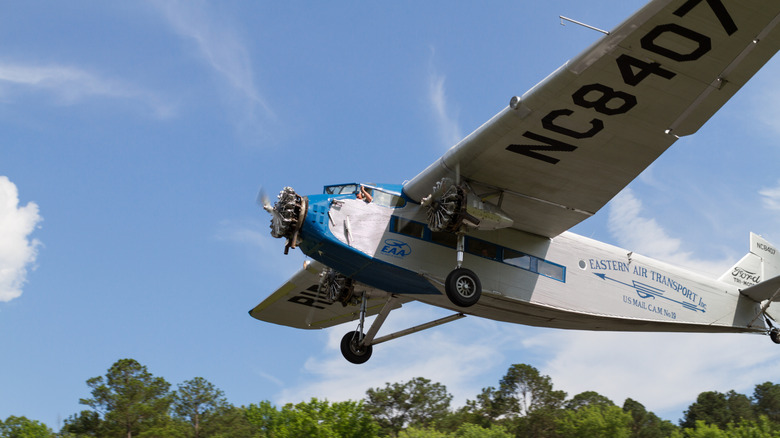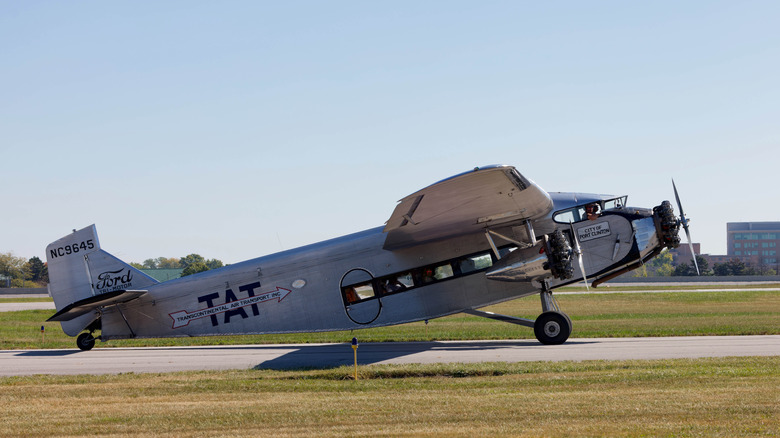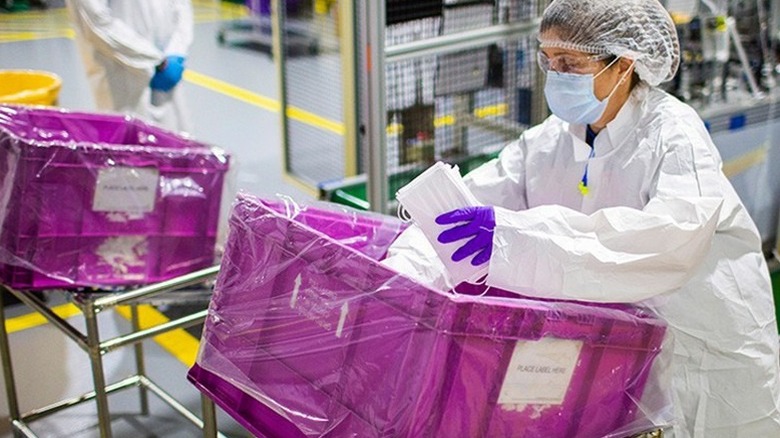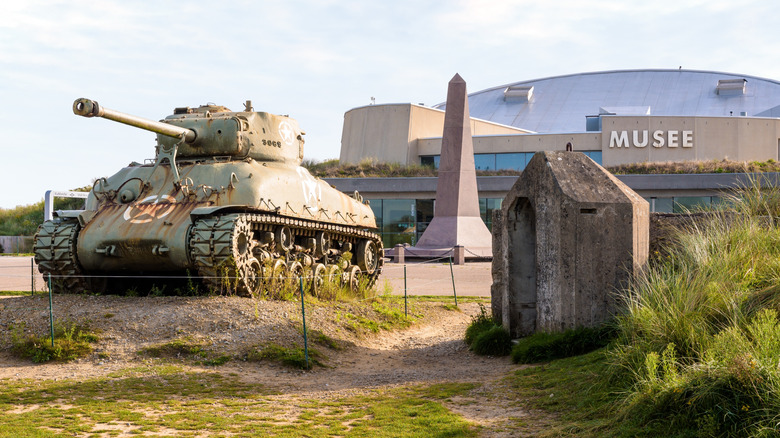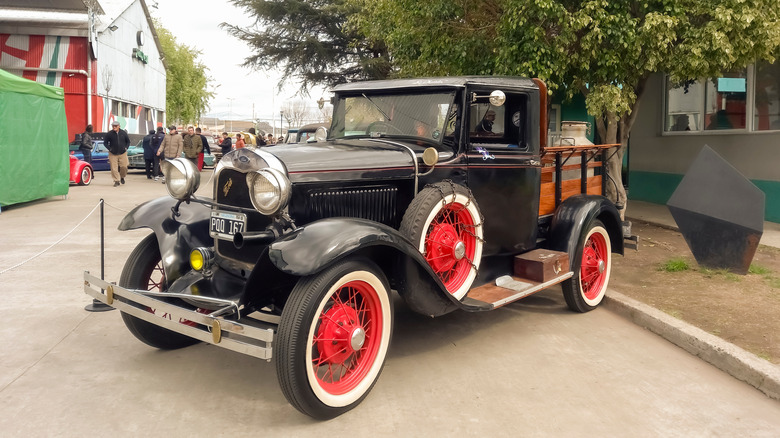4 Unexpected Things Ford Has Built
Ford is best known for its enduring American muscle cars, its powerful pickups, and even the Tin Lizzy from the early 1900s – in other words, you probably associate Ford with cars. It makes sense since that's all Ford makes right now. However, it wasn't always that way.
The Ford Motor Company shaped how people drove and how cars are produced thanks to the moving assembly line, but it also has had a hand in a lot of surprising non-car-related things throughout the years. Not every endeavor proved successful, but all were memorable in their own ways. From rattly, reliable planes to life-saving masks, Ford has attempted to utilize its groundbreaking assembly line and production expertise to pursue products outside of the automobile space.
Here are four interesting things that Ford has built over the hundred years that all shaped society in different ways. And who knows, maybe Ford will step away from cars again in the future.
The trusty metal Ford Trimotor
The Ford Trimotor, often called the "Tin Goose," got its name for being pretty noisy but it was still a respected aircraft due to its reliability and metal construction, as well as its relation to the trusted Ford brand. When it took flight for the first time in 1926, it was the largest civil aircraft in America, with a wingspan of over 77 feet and a length of nearly 50 feet. Its top speed was 135 miles per hour.
The Ford Trimotor was manufactured by Stout Metal Airplane Co, a division of Ford Motor Company, after engineer William B. Stout sent a letter to Ford and other leading manufacturers at the time, asking for a $1,000 investment towards building an aircraft. By 1925, Ford bought the entire company. During the seven years that Ford produced the Trimotor aircraft, 199 were built and more than 100 airlines flew it in the United States and other countries — including Canada, Mexico, South America, China, Europe, and Australia. Ford Trimotors will now cost you over $1 million, making them one of the most expensive older planes you can find.
Masks for healthcare employees in 2020
During the beginning of the global pandemic in 2020, Ford announced that it was producing face masks at the Van Dyke Transmission Plant in collaboration with the United Auto Workers. At the time, Ford had already produced more than three million face shields, also for healthcare workers. Before this, Ford was already helping 3M increase its own production of N95 respirators by deploying supply chain experts at its facilities. A big part of the collaboration with 3M was producing a new PAPR design and decreasing its development time — and if there's any company that knows about decreasing development time it's Ford, who invented the moving assembly line.
"By working collaboratively with 3M to quickly combine more than 100 years of Ford manufacturing and engineering expertise with personal protection equipment design and expertise, we're getting much-needed technology into the hands of frontline medical workers to help when they need it most," said Marcy Fisher, Ford's Director of Global Body Exterior and Interior Engineering.
World War II tanks that caught fire easily
From 1941 to the end of World War II, Ford repurposed its assembly lines to manufacture tanks, aircraft, and other military vehicles. Over 12,500 M4 Sherman tanks were produced, weighing over 68,000 pounds with a GAA-V8 4-cycle 8-cylinder engine that produced 500 horsepower and got the tanks to 26 miles per hour. These mid-sized tanks were meant to have a five-man crew — a commander, loader, gunner, driver, and assistant driver — and had a 75 mm main gun, two .30 caliber machine guns, and one .50 caliber machine gun.
Ford's tanks were primarily used for infantry support, leading attacks, and holding defensive positions by the United States, Great Britain, France, China, and the Soviet Union. Unfortunately, the Sherman tank was not able to keep up with other popular tanks at that time and was known to catch on fire. This earned it the clever nickname "Ronson's," a lighter with the slogan "lights every time."
Ford Model A pickup with 40 hp
You've definitely heard of the iconic Ford Model A, but some may not know that there was actually a pickup version of the Model T and Model A. When it was first produced in 1929, the Model A became one of the first manufactured pickup trucks. It interestingly has the same distinct and dramatically curved body of the Model A but an added bed in the back (some with a wood trim). We consider it one of the best-looking trucks that Ford has ever made.
Aside from its strikingly classy appearance, the Model A pickup was considered pretty functional during that time period. It had a 200 cubic inch four-cylinder engine that made 40 hp and 128 lb-ft of torque. This is nothing compared to the power that pickups have now — the 2025 F-150 can produce up to 720 hp and 640 lb-ft of torque, depending on the engine you go with. While the Ford Model A pickup wasn't towing 8,700 pounds, it got the job done while looking good.
